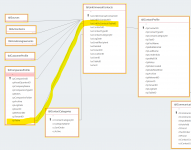mike60smart
Registered User.
- Local time
- Today, 21:13
- Joined
- Aug 6, 2017
- Messages
- 2,259
Well I have always been told by numerous experts that Referential integrity is essential.
If RI is not enforced then you are able to add Child records in a related table.
The link between tblContactProfile - PK -ctpContactID and tblLinkUniversalAddresses on luaLinkToAddressesID
is a good example.
If RI is not enforced then you are able to add Child records in a related table.
The link between tblContactProfile - PK -ctpContactID and tblLinkUniversalAddresses on luaLinkToAddressesID
is a good example.

